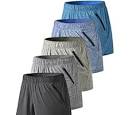Pediatric Oximeter**
Pediatric oximeters are medical devices designed specifically for use on children. These oximeters are crucial for assessing the oxygenation status of children's blood and can help healthcare professionals detect breathing difficulties, apneas, and other medical conditions that may affect a child's breathing. In this article, we will discuss the different types of pediatric oximeters available on the market, their features, and how they can benefit both children and their parents.
Types of Pediatric Oximeters
There are several types of pediatric oximeters available, each with its unique set of features and operating procedures. Some of the most common types of pediatric oximeters include:
-
Finger Oximeter: A finger oximeter is a portable device that uses a sensor attached to a child's finger to measure their blood oxygen saturation levels. These oximeters are easy to use and can be carried by the child, making them a popular choice for home use.
-
Wrist Oximeter: A wrist oximeter is a wearable device that measures the oxygenation status of a child's blood. These oximeters are often used in hospitals and clinical settings, where they can be more comfortable for the child to wear for extended periods of time.
-
Handheld Oximeter: Handheld oximeters are portable devices that can be carried by healthcare professionals or parents. They typically provide more accurate readings compared to finger oximeters and can be used to monitor children's oxygen levels in various settings.
-
Fiber Optic/MRI Oximeter: These oximeters use light waves to measure blood oxygen saturation levels and are often used in medical environments, such as operating rooms and diagnostic centers. They provide precise measurements and are suitable for children who require more accurate and complex monitoring.
Features of Pediatric Oximeters
Pediatric oximeters come with a variety of features that make them suitable for use on children. Some of the most important features include:
-
Age-appropriate design: Pediatric oximeters are designed to be comfortable and safe for children to use. They typically have small, lightweight cases and are coated with a non-allergenic material to prevent skin irritation.
-
Signal frequency: Most pediatric oximeters have multiple signal frequencies that can be selected based on the age and unique needs of the child. This allows healthcare professionals to choose the most appropriate frequency for monitoring a child's oxygen levels.
-
Alert indicators: Pediatric oximeters are designed to alert healthcare professionals if there are low oxygen saturation levels or other critical events. These alerts can be heard through the device's speaker or displayed on its screen.
-
Data storage: Many pediatric oximeters allow healthcare professionals to store oxygen saturation data, which can be useful for tracking a child's progress over time. Some oximeters also provide real-time data transmission capabilities, allowing healthcare professionals to monitor a child's oxygen levels remotely.
-
Battery life: Pediatrics oximeters typically have long battery lives, enabling them to be used for extended periods of time without the need for frequent recharging.
Benefits of Using a Pediatric Oximeter
Using a pediatric oximeter has several benefits for both children and their parents. Some of the most significant benefits include:
-
Early detection of breathing problems: Pediatric oximeters can help healthcare professionals detect early signs of breathing problems, such as apneas and respiratory distress, which can occur in children with medical conditions such as asthma or epilepsy.
-
Monitoring progress: A pediatric oximeter can help healthcare professionals monitor a child's progress and identify trends in their oxygenation levels over time. This can be especially useful for children with chronic conditions who require regular monitoring.
-
Peace of mind: Knowing that a child's oxygen levels are being continuously monitored can provide peace of mind for parents and caregivers. This can be especially important for children with complex medical conditions who may experience seizures or other sudden health changes.
-
Convenience: Pediatric oximeters are designed to be compact and easy to use, making them convenient for parents and healthcare professionals to carrying them and use them in various settings., pediatric oximeters play a crucial role in monitoring a child's health and can help healthcare professionals detect and manage medical conditions that may affect a child's breathing. When choosing a pediatric oximeter, it's essential to consider the specific needs of the child, the intended usage, and the features that are most important to you and your child.








